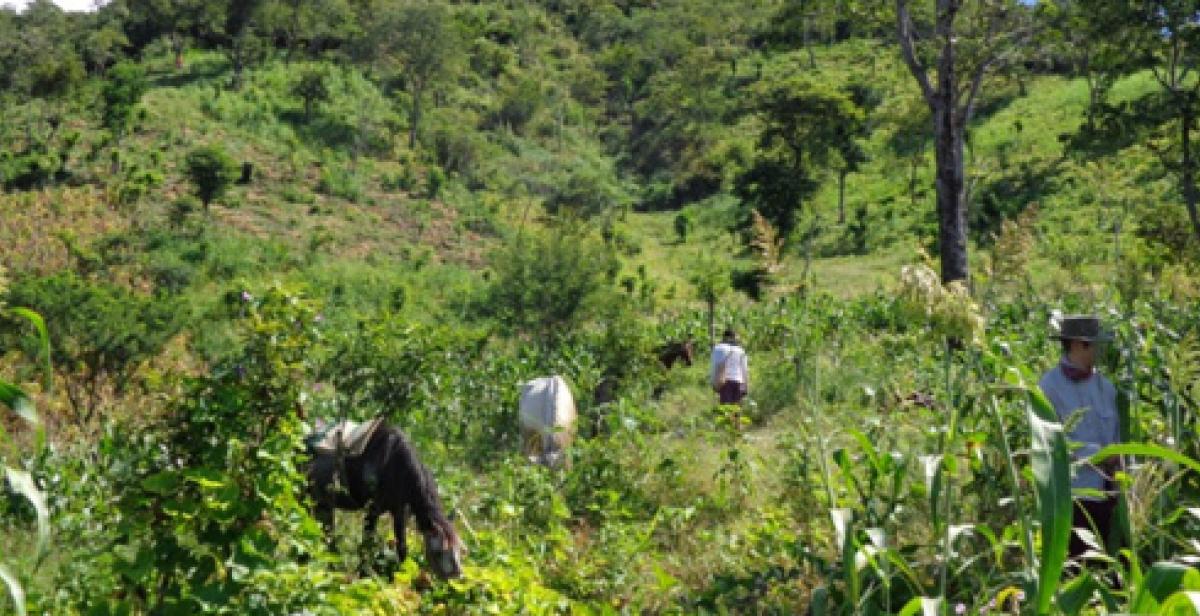An important part of the traditional Salvadoran diet is beans (frijoles). They are eaten in every household across the country. Occasionally I have found myself eating a meal at home, in a restaurant or, in this particular case, in a comedor in Santa Marta and wondering how the food got from where it was grown or produced to my plate. I think that many people, including myself, take food for granted when there is a lot of starvation going on in the world. In addition to this I want people to acknowledge the hard work that is performed by farmers in Santa Marta and how important their work is to the community.
On Friday 14th November, Adam Griffiths and I received an invitation from Estanley (a national volunteer) to help him pick beans the next morning. Neither of us hesitated in accepting the offer since we both felt that in order to really feel as though we are a part of the community we should experience the kind of work that the people of Santa Marta depend upon to survive.
The next day Adam and I woke up at about 5am to a dark, chilly morning. We got dressed and made our way to meet Estanley at his house near the church. We were greeted in the typical Salvadoran fashion: a friendly “Buenas dias”, a smile and the offer of a hearty breakfast with a hot cup of coffee. Let´s face it, you can´t beat that kind of reception.
After breakfast, the three of us started to make our way along the rocky route, over steep hills, through the trees and anthills, towards the maize fields where beans also grow. Estanley´s family owns a patch of land there and that’s where we were headed. The cool morning air made the walk a lot more manageable than if it was hot and humid.
Once we got there Adam and I found that the work was pretty straightforward. Estanley instructed us to grab the beanstalk by the base of the stem and to pull it out of the ground. Then we placed the stalks on the ground in separate piles so that they could be carried to the town. The trickiness with collecting the beans was that a lot of the stalks were entangled with the maize that grows with them. However, with a little care and attention we managed to extract the beans from the maize without causing too much damage.
After four and a half hours of working in the sun-baked fields we had collected all of the beans in our patch. Adam and I enjoyed the work because, in addition to helping Estanley´s family to collect their crops, we had experienced an integral part of the Santa Marta way of life and we felt that we had gotten a step closer to understanding what it is to live it.
Written by ICS volunteer Chris Oswald



